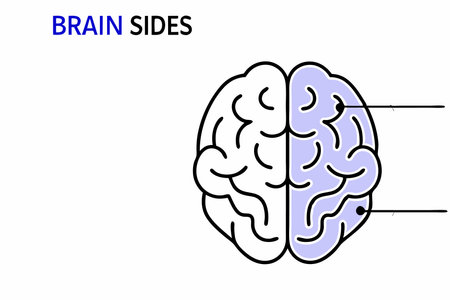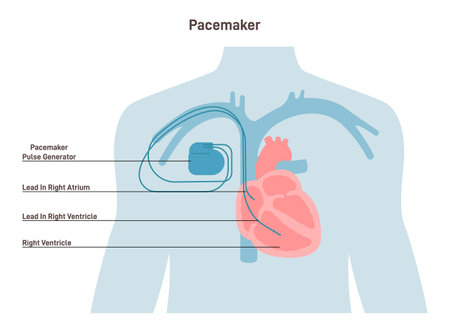Overview of Augmentative and Alternative Communication (AAC)
Augmentative and Alternative Communication (AAC) refers to a variety of tools, strategies, and technologies that help people who have difficulties with spoken or written language. In the United States, AAC plays a vital role in supporting individuals who cannot rely on speech alone to communicate their needs, thoughts, and ideas. The main goal of AAC is to give everyone a way to express themselves, no matter their age or disability.
What is AAC?
AAC includes any method that supplements or replaces spoken language. This can be as simple as gestures or pictures, or as advanced as electronic devices that speak for the user. In everyday American life, you might see children using picture boards in schools or adults using speech-generating devices in public places. AAC is not just for people who never speak; it can also support those who sometimes struggle with communication due to medical conditions or developmental delays.
Who Benefits from AAC in the United States?
AAC supports a wide range of people across different settings in the U.S. Here are some common groups who benefit:
| Group | Examples |
|---|---|
| Children with Developmental Disabilities | Autism Spectrum Disorder, Down Syndrome |
| Adults with Acquired Conditions | Stroke, Traumatic Brain Injury (TBI), ALS (Lou Gehrigs disease) |
| People with Temporary Communication Needs | After surgery, during recovery from illness |
| Individuals with Progressive Diseases | Multiple Sclerosis (MS), Parkinson’s Disease |
Main Types of AAC
AAC systems in the United States are usually divided into two main types:
- Unaided AAC: Uses the body only, like sign language or facial expressions.
- Aided AAC: Involves tools or devices, such as communication boards, tablets with special apps, or high-tech speech-generating devices.
The Importance of AAC in Everyday Life
AAC allows people to take part in family activities, schoolwork, jobs, and community events. By providing multiple ways to communicate, AAC helps build confidence and independence for users all across America.
2. Historical Development of AAC in America
Augmentative and Alternative Communication (AAC) has come a long way in the United States, evolving from simple handmade tools to sophisticated technology that gives a voice to people with complex communication needs. This journey reflects both technological advances and changing attitudes about disability and inclusion.
Early Beginnings
The roots of AAC in America can be traced back to the 1950s and 1960s when educators and therapists started creating basic communication boards using pictures, letters, and words for individuals who could not speak. These early efforts were mainly used in schools or rehabilitation centers and were often handmade by parents or teachers.
Technological Advancements
The 1970s and 1980s saw the introduction of electronic devices designed specifically for communication. The first speech-generating devices (SGDs) allowed users to select words or phrases that would then be spoken aloud. These devices opened new possibilities for individuals with speech impairments but were often bulky and expensive.
Key Milestones in AAC Development
| Year | Milestone |
|---|---|
| 1971 | First portable communication device developed (the “Patient Operated Selector Mechanism” or POSSUM) |
| 1980s | Introduction of more affordable electronic speech-generating devices |
| 1990 | The Americans with Disabilities Act (ADA) passed, ensuring equal access to communication technology |
| 2000s | Integration of AAC apps on mainstream tablets and smartphones |
| 2010s-Present | Advances in eye-tracking technology and cloud-based AAC solutions |
The Impact of Legislation: Americans with Disabilities Act (ADA)
The passage of the ADA in 1990 was a turning point for AAC in the U.S. This law requires public institutions, schools, employers, and businesses to provide reasonable accommodations to people with disabilities, including access to communication tools. Thanks to the ADA, insurance companies and schools are more likely to fund AAC devices, making them accessible to more people than ever before.
AAC Today: A Culture of Inclusion
Today, AAC is an important part of American special education, healthcare, and community life. There is a growing focus on person-centered approaches—making sure that each individuals unique needs and preferences guide their AAC system choices. Modern AAC options range from simple picture cards to high-tech devices with voice output, allowing users to participate fully in school, work, and social activities.

3. Core Principles and Best Practices in AAC
Guiding Values in AAC Interventions
Augmentative and Alternative Communication (AAC) is more than just technology or tools—it’s about supporting people in expressing themselves and connecting with others. In the United States, AAC interventions are guided by values that ensure everyone gets the help they need in a way that fits their unique life and culture.
Individualized Support
No two people who use AAC are exactly alike. Each person has their own strengths, needs, preferences, and life situations. That’s why it’s essential to personalize AAC systems. This means choosing the right devices, communication boards, or apps based on the user’s age, abilities, daily routines, and goals. For example, a preschooler might need simple picture boards, while an adult may prefer a tablet-based speech app.
| User Profile | Preferred AAC Support |
|---|---|
| Young Child (Ages 3-6) | Picture symbol boards with familiar images |
| Teenager with Autism | Tablet-based apps with customizable vocabulary |
| Adult after Stroke | Speech-generating device with text-to-speech features |
Evidence-Based Practice
AAC professionals in the U.S. rely on research and proven methods to make decisions. Evidence-based practice means using approaches that are supported by scientific studies and clinical experience. This helps ensure that AAC users get interventions that truly work for them. For example, research shows that including family members in AAC training leads to better outcomes for the user.
Key Elements of Evidence-Based Practice:
- Using up-to-date research findings
- Considering the individual’s needs and preferences
- Applying professional expertise and experience
- Involving families and caregivers in decision-making
User-Centered Design
User-centered design puts the person who will use AAC at the heart of every decision. This means involving users and their families from the start—asking what works best for them, what feels comfortable, and what fits into their daily lives. It also means making sure devices are easy to use, culturally appropriate, and flexible enough to change as the user grows or their needs change.
Examples of User-Centered Design:
- Selecting vocabulary based on the user’s interests (like favorite foods or hobbies)
- Adjusting device settings for visual or motor needs (such as larger buttons or voice options)
- Respecting cultural preferences in symbols and language choices
The core principles of individualized support, evidence-based practice, and user-centered design shape how AAC is delivered across diverse communities in the United States. These guiding values help ensure that every person can communicate effectively—no matter their challenges or background.
4. Current Technologies and Trends in AAC
High-Tech Speech-Generating Devices (SGDs)
Speech-generating devices, also known as SGDs, play a significant role in augmentative and alternative communication (AAC) for people in the United States who have difficulty speaking. These devices use digital voices to help users express their thoughts, needs, and feelings. Popular brands in the U.S. include:
| Brand/Platform | Main Features | Typical Users |
|---|---|---|
| Tobii Dynavox | Touchscreen, eye-tracking technology, customizable vocabulary | Children and adults with complex communication needs |
| PRC-Saltillo (Accent Series) | Multiple language options, symbol-based or text-based communication | People with ALS, autism, cerebral palsy, stroke recovery |
| Lingraphica | Simplified interface, designed for aphasia and stroke survivors | Adults with speech loss after brain injury or illness |
Mobile Apps for AAC Communication
The rise of smartphones and tablets has made AAC more accessible than ever before. Many families and professionals in the U.S. use iPads or Android tablets loaded with specialized AAC apps. Here are some popular choices:
| AAC App Name | Description | Device Compatibility |
|---|---|---|
| Proloquo2Go | User-friendly, highly customizable app using symbols or text; supports growth from early learners to adults. | iOS (iPad/iPhone) |
| LAMP Words for Life | Based on evidence-based therapy principles; uses consistent motor patterns for words. | iOS (iPad/iPhone) |
| TouchChat HD | Flexible layouts; voice output; American English vocabulary sets. | iOS (iPad/iPhone) |
| CoughDrop | Cloud-based; works across devices; allows team collaboration between user and support staff. | iOS, Android, web browsers |
| Avaz AAC | Easy-to-navigate interface for children; includes picture and text modes. | iOS, Android |
Recent Innovations Promoting Communication Accessibility
The field of AAC is always evolving to become more inclusive and user-friendly. In the U.S., recent trends focus on making communication tools more personalized and accessible for people with different abilities. Notable developments include:
Eye-Tracking Technology
This allows individuals who cannot use their hands to control a device with just their eyes. Brands like Tobii Dynavox offer this feature for both dedicated devices and tablets.
Wearable AAC Devices
Newer wearable gadgets like smartwatches are being explored as platforms for simple communication aids, especially for people on-the-go.
Integration With Smart Home Technology
AAC systems can now work alongside smart home tools like Amazon Alexa or Google Home, helping users control lights, thermostats, and appliances using their communication device.
Cultural Relevance in the U.S.
AAC solutions in America often emphasize independence, self-advocacy, and community participation. Many devices offer American English voices—including regional accents—and vocabulary tailored to daily life in the United States. Accessibility laws such as the Americans with Disabilities Act (ADA) continue to drive innovation to ensure equal communication opportunities for everyone.
5. Cultural Considerations and Future Directions for AAC
Understanding the Impact of American Culture on AAC
In the United States, culture plays a big role in how Augmentative and Alternative Communication (AAC) is adopted and used. The U.S. values independence, self-expression, and inclusion. These values influence how families, schools, and professionals support people using AAC devices or systems.
Key Cultural Factors Affecting AAC Adoption
| Factor | Impact on AAC |
|---|---|
| Diversity of Languages & Backgrounds | AAC systems need to support multiple languages and respect different cultural traditions. |
| Individualism | Encourages personalized AAC solutions that help users express their unique thoughts and needs. |
| Inclusive Education Policies | Promotes access to AAC in mainstream classrooms, making sure everyone can participate. |
| Technology Access | Access varies by region and family resources, influencing who can get and use AAC tools. |
Equity of Access in the U.S.
Not everyone in America has equal access to AAC. Differences in income, education, healthcare, and location affect who can benefit from these tools. Urban areas may have more specialists and funding for high-tech devices, while rural areas might rely on simpler or low-tech options. Insurance coverage can also impact whether families get the AAC support they need.
Main Barriers to Equity:
- Cost: High-tech AAC devices can be expensive.
- Lack of Awareness: Some families or teachers may not know about AAC or how it helps.
- Cultural Stigma: In some communities, disabilities are misunderstood or stigmatized, which can discourage AAC use.
- Training Gaps: Not all professionals are trained to support diverse users.
Future Directions: Supporting Diverse Populations Through Innovation
The field of AAC is always growing. New technologies and research aim to make communication easier for everyone—no matter where they live or what language they speak. Here are some trends shaping the future of AAC in America:
- Bilingual and Multicultural AAC Systems: More devices now offer support for multiple languages and customizable vocabularies.
- User-Friendly Apps: Smartphone and tablet apps are making AAC more affordable and widely available.
- Culturally Responsive Training: Professionals are learning how to better serve families from different backgrounds.
- Telepractice Services: Online therapy makes expert help available even in remote areas.
- User-Centered Design: People with disabilities are working alongside engineers to create tools that truly fit their lives.
The U.S. continues to move toward greater inclusion by listening to individuals who use AAC, understanding their cultural backgrounds, and removing barriers so everyone has a voice. As technology advances and awareness grows, more Americans will have the chance to communicate fully in every part of life.


